Shared but Threatened: The Heritage of Wild Food Plant Gathering among Different Linguistic and Religious Groups in the Ishkoman and Yasin Valleys, North Pakistan
Abstract
1. Introduction
2. Materials and Methods
2.1. Study Area and Communities
2.1.1. Ishkoman Valley
2.1.2. Yasin Valley
2.2. Field Study
2.3. Data Analysis
3. Results
3.1. Food System of the Studied Communities
3.2. Wild Food Plant Uses
3.3. Cross Cultural Analyses
4. Discussion
4.1. Ismailism and Its Cultural Pluralism: A Homogenizing Factor for LEK and LFK?
4.2. Dynamics of Change of Local Knowledge: Nalla and Its Vanishing Role
“My father and grandfather used wild food plants in the old days when we were children and we also used the mountain, taking our animals to graze over there. When I was young I could walk and I was able to go to the mountains but now I can’t climb them. As you ask about the degradation of wild food plants, I am not sure whether wild food plants are increasing or decreasing. I am old and my legs don’t allow me to go there and see over there. Our younger generation is not interested in such cultural things because they have facilities and can get a modern education in cities. But I think that wild plants are still available in Nalla, but who among us is going to Nalla? Of course no one goes there because we don’t need wild food plants anymore and the consumption of wild food plants is a story of former times when my father and forefather were poor and wild plants were easily available”.
4.3. Strategies for the Future: Revitalizing the Wild Food Cultural Heritage and Nalla
4.4. Food Security in Rural Areas of Pakistan: Quo Vadis?
5. Conclusions
Author Contributions
Funding
Acknowledgments
Conflicts of Interest
References
- Ericksen, P.J. Conceptualizing food systems for global environmental change research. Global Environ. Chang. 2008, 18, 234–245. [Google Scholar] [CrossRef]
- Akramov, K.T.; Yu, B.; Fan, S. Mountains, Global Food Prices, and Food Security in the Developing World; IFPRI Discussion Paper 989; International Food Policy Research Institute (IFPRI): Washington, DC, USA, 2010. [Google Scholar]
- Dame, J.; Nusser, M. Food security in high mountain regions: Agricultural production and the impact of food subsidies in Ladakh, Northern India. Food Secur. 2011, 3, 179–194. [Google Scholar] [CrossRef]
- Tiwari, P.C.; Joshi, B. Natural and socio-economic factors affecting food security in the Himalayas. Food Secur. 2012, 4, 195–207. [Google Scholar] [CrossRef]
- Rasul, G.; Hussain, A. Sustainable food security in the mountains of Pakistan: Towards a policy framework. Ecol. Food Nutr. 2015, 54, 625–643. [Google Scholar] [CrossRef]
- Turner, N.G.; Łuczaj, Ł.J.; Migliorini, P.; Pieroni, A.; Dreon, A.L.; Sacchetti, L.E.; Paoletti, M.G. Edible and Tended Wild Plants, Traditional Ecological Knowledge and Agroecology. Crit. Rev. Plant. Sci. 2011, 30, 198–225. [Google Scholar] [CrossRef]
- Berkes, F.; Colding, J.; Folke, C. Rediscovery of traditional ecological knowledge as adaptive management. Ecol. Appl. 2000, 10, 1251–1262. [Google Scholar] [CrossRef]
- Lauer, M.; Aswani, S. Indigenous Ecological Knowledge as Situated Practices: Understanding Fishers’ Knowledge in the Western Solomon Islands. Am. Anthropol. 2009, 11, 317–329. [Google Scholar] [CrossRef]
- Whyte, K.P. On the role of traditional ecological knowledge as a collaborative concept: A philosophical study. Ecol. Process. 2013, 2, 7. [Google Scholar] [CrossRef]
- Marouf, M.; Batal, M.; Moledor, S.; Talhouk, S.N. Exploring the Practice of Traditional Wild Plant Collection in Lebanon. Food Cult. Soc. 2015, 18, 355–378. [Google Scholar] [CrossRef]
- Cucinotta, F.; Pieroni, A. “If you want to get married, you have to collect virdura”: The.vanishing custom of gathering and cooking wild food plants on Vulcano, Aeolian Islands, Sicily. Food Cult. Soc. 2018, 31, 539–567. [Google Scholar] [CrossRef]
- Hadjichambis, A.; Paraskeva-Hadjichambi, D.; Della, A.; Giusti, M.E.; De Pasquale, C.; Lenzarini, C.; Censorii, E.; Gonzales-Tejero, M.R.; Sanchez-Rojas, C.P.; Ramiro-Gutierrez, J.M.; et al. Wild and semi-domesticated food plant consumption in seven circum-Mediterranean areas. Int. J. Food Sci. Nutr. 2008, 59, 383–414. [Google Scholar] [CrossRef] [PubMed]
- Schunko, C.; Vogl, C.R. Organic farmers use of wild food plants and fungi in a hilly area in Styria (Austria). J. Ethnobiol. Ethnomed. 2010, 6, 17. [Google Scholar] [CrossRef] [PubMed]
- Łuczaj, Ł.; Pieroni, A.; Tardío, J.; Pardo-de-Santayana, M.; Sõukand, R.; Svanberg, I.; Kalle, R. Wild food plant use in 21 st century Europe, the disappearance of old traditions and the search for new cuisines involving wild edibles. Acta Soc. Bot. Pol. 2012, 81, 359–370. [Google Scholar] [CrossRef]
- Setalaphruk, C.; Price, L.L. Children’s traditional ecological knowledge of wild food resources: A case study in a rural village in Northeast Thailand. J. Ethnobiol. Ethnomed. 2007, 3, 33. [Google Scholar] [CrossRef] [PubMed]
- Bhattarai, S.; Chaudhary, R.P.; Taylor, R.S. Wild edible plants used by the people of Manang district, central Nepal. Ecol. Food Nutr. 2009, 48, 1–20. [Google Scholar] [CrossRef] [PubMed]
- Termote, C.; Van Damme, P.; Djailo, B.D.A. Eating from the wild: Turumbu, Mbole and Bali traditional knowledge on non-cultivated edible plants, District Tshopo, DR Congo. Genet. Resour. Crop. Evol. 2011, 58, 585–618. [Google Scholar] [CrossRef]
- Lawrence, A.; Phillips, O.L.; Ismodes, A.R.; Lopez, M.; Rose, S.; Wood, D.; Farfan, A.J. Local values for harvested forest plants in Madre de Dios, Peru: Towards a more contextualized interpretation of quantitative ethnobotanical data. Biodivers. Conserv. 2005, 14, 45–79. [Google Scholar] [CrossRef]
- Arenas, P.; Scarpa, G.F. Edible wild plants of the Chorote Indians, Gran Chaco, Argentina. Bot. J. Linn. Soc. 2007, 153, 73–85. [Google Scholar] [CrossRef][Green Version]
- Ahmad, K.; Pieroni, A. Folk knowledge of wild food plants among the tribal communities of Thakht-e-Sulaiman Hills, North-West Pakistan. J. Ethnobiol. Ethnomed. 2016, 12, 17. [Google Scholar] [CrossRef]
- Geng, Y.; Zhang, Y.; Ranjitkar, S.; Huai, H.; Wang, Y. Traditional knowledge and its transmission of wild edibles used by the Naxi in Baidi Village, northwest Yunnan province. J. Ethnobiol. Ethnomed. 2016, 12, 10. [Google Scholar] [CrossRef]
- Kaliszewska, I.; Kołodziejska-Degórska, I. The social context of wild leafy vegetables uses in Shiri, Daghestan. J. Ethnobiol. Ethnomed. 2015, 11, 63. [Google Scholar] [CrossRef] [PubMed][Green Version]
- Pieroni, A.; Hovsepyan, R.; Manduzai, A.K.; Sõukand, R. Wild food plants traditionally gathered in central Armenia: Archaic ingredients or future sustainable foods? Environ. Dev. Sustain. 2020, 1–24. [Google Scholar] [CrossRef]
- Sõukand, R.; Pieroni, A. Resilience in the mountains: Biocultural refugia of wild food in the Greater Caucasus Range, Azerbaijan. Biodivers. Conserv. 2019, 28, 3529–3545. [Google Scholar] [CrossRef]
- Pieroni, A.; Sõukand, R. Ethnic and religious affiliations affect traditional wild plant foraging in Central Azerbaijan. Genet. Resour. Crop. Evol. 2019, 66, 1495–1513. [Google Scholar] [CrossRef]
- Abbas, W.; Hussain, W.; Hussain, W.; Badshah, L.; Hussain, K.; Pieroni, A. Traditional wild vegetables gathered by four religious’ groups in Kurram District, Khyber Pakhtunkhwa, North-West Pakistan. Genet. Resour. Crop. Evol. 2019, 66, 735–758. [Google Scholar] [CrossRef]
- Pieroni, A.; Nedelcheva, A.; Dogan, Y. Local knowledge of medicinal plants and wild food plants among Tatars and Romanians in Dobruja (South-East Romania). Genet. Resour. Crop. Evol. 2015, 62, 605–620. [Google Scholar] [CrossRef]
- Quave, C.L.; Pieroni, A.A. Reservoir of ethnobotanical knowledge informs resilient food security and health strategies in the Balkans. Nat. Plants 2015, 1, 14021. [Google Scholar] [CrossRef]
- Pieroni, A.; Sõukand, R.; Quave, C.L.; Hajdari, A.; Mustafa, B. Traditional food uses of wild plants among the Gorani of South Kosovo. Appetite 2017, 108, 83–92. [Google Scholar] [CrossRef]
- Pieroni, A.; Sõukand, R.; Amin, H.I.M.; Zahir, H.; Kukk, T. Celebrating Multi-Religious Co-Existence in Central Kurdistan: The Bio-Culturally Diverse Traditional Gathering of Wild Vegetables among Yazidis, Assyrians, and Muslim Kurds. Hum. Ecol. 2018, 46, 217–227. [Google Scholar] [CrossRef]
- Von Grebmer, K.; Bernstein, J.; Patterson, F.; Wiemers, M.; Chéilleachair, R.N.; Foley, C.; Gitter, S.; Ekstrom, K.; Fritschel, H. Global Hunger Index: The Challenge of Hunger and Climate Change; Concern Worldwide and Deutsche Welthungerhilfe e.V.: Dublin, Irish; Bonn, Germany, 2019; Available online: https://admin.concern.net/sites/default/files/documents/2019-10/2019%20Global%20Hunger%20Index.pdf (accessed on 18 April 2020).
- Tiwari, P. Land-use changes in Himalaya and their impact on the plain’s ecosystem: Need for sustainable land use. Land Use Policy 2000, 17, 101–111. [Google Scholar] [CrossRef]
- Backstrom, P.C.; Radloff, C.F. Sociolinguistic Survey of Northern Pakistan. Languages of Northern Pakistan; National Institute of Pakistan Studies and SIL: Islamabad, Pakistan; Wycombe, UK, 1992; Volume 2. [Google Scholar]
- Kreutzmann, H. The Karakoram Highway: The impact of road construction on mountain societies. Mod. Asian Stud. 1991, 25, 711–736. [Google Scholar] [CrossRef]
- Kreutzmann, H. (Ed.) Karakoram in Transition. Culture, Development, and Ecology in the Hunza Valley; Oxford University Press: Oxford, UK, 2006. [Google Scholar]
- Kreutzmann, H. Globalization, Spatial Integration, and Sustainable Development in Northern Pakistan. Mt. Res. Dev. 1995, 15, 213–227. [Google Scholar] [CrossRef]
- Abbasi, A.M.; Khan, M.A.; Shah, M.H.; Shah, M.M.; Pervez, A.; Ahmad, M. Ethnobotanical appraisal and cultural values of medicinally important wild edible vegetables of Lesser Himalayas-Pakistan. J. Ethnobiol. Ethnomed. 2013, 9, 66. [Google Scholar] [CrossRef] [PubMed]
- Ahmad, K.; Weckerle, C.S.; Nazir, A. Ethnobotanical investigation of wild vegetables used among local communities in northwest Pakistan. Acta Soc. Bot. Pol. 2019, 88, 1. [Google Scholar] [CrossRef]
- Van Oudenhoven, F.; Haider, J. With Our Own Hands: A Celebration of Food and Life in the Pamir Mountains of Afghanistan and Tajikistan; LM: Utrecht, The Netherlands, 2015. [Google Scholar]
- Soelberg, J.; Jäger, A.K. Comparative ethnobotany of the Wakhi agropastoralist and the Kyrgyz nomads of Afghanistan. J. Ethnbiol. Ethnomed. 2016, 12, 2. [Google Scholar] [CrossRef]
- Bhatta, L.D.; Udas, E.; Khan, B.; Ajmal, A.; Amir, R.; Ranabhat, S. Local knowledge based. Perceptions on climate change and its impacts in the Rakaposhi valley of Gilgit-Baltistan, Pakistan. Int. J. Clim. Chang. Strat. 2020, 12, 2. [Google Scholar] [CrossRef]
- Takhtajan, A. Floristic Regions of the World; University of California Press: Berkeley, CA, USA; Los Angeles, CA, USA, 1986; pp. 154–155. [Google Scholar]
- Köppen, W. Klassification der Klimate nach Temperatur, Niederschlag and Jahreslauf. Petermanns Geogr. Mitt. 1918, 64, 193–203 and 243–248. [Google Scholar]
- Kreutzmann, H. Linguistic diversity in space and time: A survey in the Eastern Hindukush and Karakoram. Himal. Linguistics 2005, 4, 1–24. [Google Scholar] [CrossRef][Green Version]
- Keene, C.W.; Elmslie, G. Military Report and Gazetteer of the Gilgit Agency and the Independent Territories of Tangir and Darel; Government Monotype Press: Simla, India, 1909; pp. 1–208. [Google Scholar]
- Kreutzmann, H. Ethnizität im Entwicklungsprozeß. Die Wakhi in Hochasien; Dietrich Reimer: Berlin, Germany, 1996; pp. 1–488. [Google Scholar]
- Berger, H. A survey of Burushaski studies. J. Cent. Asia 1985, 8, 33–37. [Google Scholar]
- Musavir, A. Ethnicity, Identity and Group Vitality: A study of Burushos of Srinagar. J. Ethnic Cult. Stud. 2016, 3, 1–10. [Google Scholar] [CrossRef]
- Lorimer, D.L.R. Burushaski and its alien neighbors: Problems in linguistic contagion. Trans. Philol. Soc. 2008, 36, 63–98. [Google Scholar] [CrossRef]
- Jettmar, K. Bolor: A Contribution to the Political and Ethnic Geography of North Pakistan; University of Heidelberg: Heidelberg, Germany, 1977; pp. 1–37. [Google Scholar]
- Jettmar, K. Die Religionen des Hindukusch; Kohlhammer: Stuttgart, Germany, 1975; pp. 1–525. [Google Scholar]
- International Society of Ethnobiology. Code of Ethics. 2008. Available online: www.ethnobiology.net/what-we-do/core-programs/ise-ethics-program/code-of-ethics/ (accessed on 30 December 2019).
- Nasir, E.; Ali, S.I. (Eds.) Flora of West Pakistan; No. 1-131; University of Karachi: Karachi, Pakistan, 1970–1979. [Google Scholar]
- Nasir, E.; Ali, S.I. (Eds.) Flora of Pakistan; No. 132-190; University of Karachi: Karachi, Pakistan, 1980–1989. [Google Scholar]
- Nasir, E.; Ali, S.I. (Eds.) Flora of Pakistan; No. 191-193; University of Karachi: Karachi, Pakistan, 1989–1992. [Google Scholar]
- Ali, S.I.; Qaiser, M. (Eds.) Flora of Pakistan; University of Karachi: Karachi, Pakistan, 1993–2009. [Google Scholar]
- The Plant List. Version 1.1. 2013. Available online: http://www.theplantlist.org/ (accessed on 30 November 2019).
- Index Fungorum. 2020. Available online: http://www.indexfungorum.org/Names/Names.asp (accessed on 19 April 2020).
- Stevens, P.F. Angiosperm Phylogeny Website, Version 14. 2017. Available online: http://www.mobot.org/MOBOT/research/APweb (accessed on 1 December 2019).
- González-Tejero, M.R.; Casares-Porcel, M.; Sánchez-Rojas, C.P.; Ramiro-Gutiérrez, J.M.; Molero-Mesa, J.; Pieroni, A.; Giusti, M.E.; Censorii, E.; de Pasquale, C.; Della, A.; et al. Medicinal plants in the Mediterranean area: Synthesis of the results of the project Rubia. J. Ethnopharmacol. 2008, 116, 341–357. [Google Scholar] [CrossRef] [PubMed]
- Hussain, F.; Shah, S.M.; Sher, H. Traditional resource evaluation of some plants of Mastuj, District Chitral, Pakistan. Pak. J. Bot. 2008, 39, 339–354. [Google Scholar]
- Ali, H.; Qaiser, M. The ethnobotany of Chitral valley, Pakistan with particular reference to medicinal plants. Pak. J. Bot. 2009, 41, 2009–2041. [Google Scholar]
- Khan, B.A.; Abdukadir, A.; Qureshi, R.; Mustafa, G.H. Medicinal uses of plants by the inhabitants of Khunjerab National Park, Gilgit, Pakistan. Pak. J. Bot. 2011, 43, 2301–2310. [Google Scholar]
- Noor, A.; Khatoon, S.; Ahmed, M. Enumeration of the ethnobotanical uses of some herbs in Astore Valley, Gilgit-Baltistan, Pakistan with reference to health cure purposes. FUUAST J. Biol. 2012, 2, 31–48. [Google Scholar]
- Shah, S.M.; Hussain, F. Ethnomedicinal plant wealth of Mastuj valley, Hindukush range, District Chitral, Pakistan. J. Med. Plants Res. 2012, 6, 4328–4337. [Google Scholar] [CrossRef][Green Version]
- Bibi, T.; Ahmad, M.; Tareen, R.B.; Tareen, N.M.; Jabeen, R.; Rehman, S.U.; Sultana, S.; Zafar, M.; Yaseen, G. Ethnobotany of medicinal plants in district Mastung of Balochistan province-Pakistan. J. Ethnopharmacol. 2014, 157, 79–89. [Google Scholar] [CrossRef] [PubMed]
- Shedayi, A.A.; Xu, M.; Gulraiz, B. Traditional medicinal uses of plants in Gilgit-Baltistan, Pakistan. J. Med. Plants Res. 2014, 8, 992–1004. [Google Scholar] [CrossRef]
- Jabeen, N.; Ajaib, M.; Siddiqui, M.F.; Ulfat, M.; Khan, B. A survey of ethnobotanically important plants of district Ghizer, Gilgit-Baltistan. FUUAST J. Biol. 2015, 5, 153–160. [Google Scholar]
- Khan, M.P.Z.; Ahmad, M.; Zafar, M.; Sultana, S.; Ali, M.I.; Sun, H. Ethnomedicinal uses of edible wild fruits (EWFs) in Swat Valley, Northern Pakistan. J. Ethnopharmacol. 2015, 173, 191–203. [Google Scholar] [CrossRef] [PubMed]
- Khan, S.W.; Abbas, Q.; Hassan, S.N.; Khan, H.; Hussain, A. Medicinal plants of Turmic Valley (Central Karakoram National Park), Gilgit-Baltistan, Pakistan. J. Biores. Manag. 2015, 2, 81–90. [Google Scholar] [CrossRef]
- Shah, S.M.; Hussain, F. Weed diversity in Maize fields of Mastuj valley, Hindukush range, Pakistan. Pure Appl. Biol. 2016, 5, 1044–1050. [Google Scholar] [CrossRef]
- Tareen, N.M.; Saeed-Ur-Rehman, M.A.; Shinwari, Z.K.; Bibi, T. Ethnomedicinal utilization of wild edible vegetables in District Harnai of Balochistan province Pakistan. Pak. J. Bot. 2016, 48, 1159–1171. [Google Scholar]
- Naveed, S.; Khattak, I.; Marwat, K.B. Ethnobotanical study of important wild plants of district Swabi Khyber Pakhtunkhwa Pakistan. Pak. J. Weed Sci. Res. 2018, 24, 279–293. [Google Scholar] [CrossRef]
- Abbas, Z.; Alam, J.; Muhammad, S.; Bussmann, R.W.; Khan, S.M.; Hussain, M. Phyto-cultural diversity of the Shigar valley (Central Karakorum) Baltistan, Northern Pakistan. Ethnobot. Res. Appl. 2019, 18, 31. [Google Scholar] [CrossRef]
- Bibi, N. Profile of the Medicinal and Economic Plants of Laspur Valley Chitral, Pakistan. Med. Aromat. Plants 2019, 8, 330. [Google Scholar] [CrossRef][Green Version]
- Andani, K. Divine Diversity: The Aga Khan’s Vision of Pluralism. J. Islamic Muslim Stud. 2019, 4, 1–42. [Google Scholar] [CrossRef]
- Barth, F. Ethnic groups and boundaries. In the Social Organization of Culture Difference; Universitetsforlaget: Oslo, Norway, 1969. [Google Scholar]
- Kassam, K.A. Keeping all the parts: Adaptation amidst dramatic change in the Pamir Mountains. In Continuity and Change in Cultural Adaptation to Mountain Environments; Lozny, L.R., Ed.; Springer: New York, NY, USA, 2019; pp. 303–317. [Google Scholar]
- Kassam, K.A.S. Pluralism, resilience, and the ecology of survival: Case studies from the Pamir Mountains of Afghanistan. Ecol. Soc. 2010, 15, 8. [Google Scholar] [CrossRef]
- Quiroz, D.; van Andel, T. Evidence of a link between taboos and sacrifices and resource scarcity of ritual plants. J. Ethnobiol. Ethnomed. 2015, 11, 5. [Google Scholar] [CrossRef]
- Begossi, A. Food taboos at Búzios Island (Brazil): Their significance and relation to folk medicine. J. Ethnobiol. 1992, 12, 117–139. [Google Scholar]
- Spies, M. Changing Food Systems and Their Resilience in the Karakoram Mountains of Northern Pakistan: A Case Study of Nagar. Mt. Res. Dev. 2018, 38, 299–309. [Google Scholar] [CrossRef]
- Sokefeld, M. From colonialism to postcolonial colonialism: Changing modes of domination in the Northern Areas of Pakistan. J. Asian Stud. 2005, 64, 939–973. [Google Scholar] [CrossRef]
- Adnan, M.; Hölscher, D. Medicinal Plant Abundance in Degraded and Reforested Sites in Northwest Pakistan. Mt. Res. Dev. 2010, 30, 25–32. [Google Scholar] [CrossRef]
- Cook, N.; Butz, D. The Atta Abad landslide and everyday mobility in Gojal, northern Pakistan. Mt. Res. Dev. 2013, 33, 372–380. [Google Scholar] [CrossRef]
- Carpenter, C. The role of economic invisibility in development: Veiling women’s work in rural Pakistan. Nat. Res. Forum 2001, 25, 11–19. [Google Scholar] [CrossRef]
- Kugelman, M.; Hathaway, R.M. Hunger Pains: Pakistan Food Insecurity; Woodrow Wilson International Center for Scholars: Washington, WA, USA, 2010; Available online: https://www.wilsoncenter.org/sites/default/files/media/documents/publication/ASIA_100412_PakistFood_rptL0713FINALVERSION.pdf (accessed on 10 April 2020).
- Dove, M.R. Bitter Shade: Throwing Light on Politics and Ecology in Contemporary Pakistan. Hum. Org. 2003, 62, 229–241. [Google Scholar] [CrossRef]
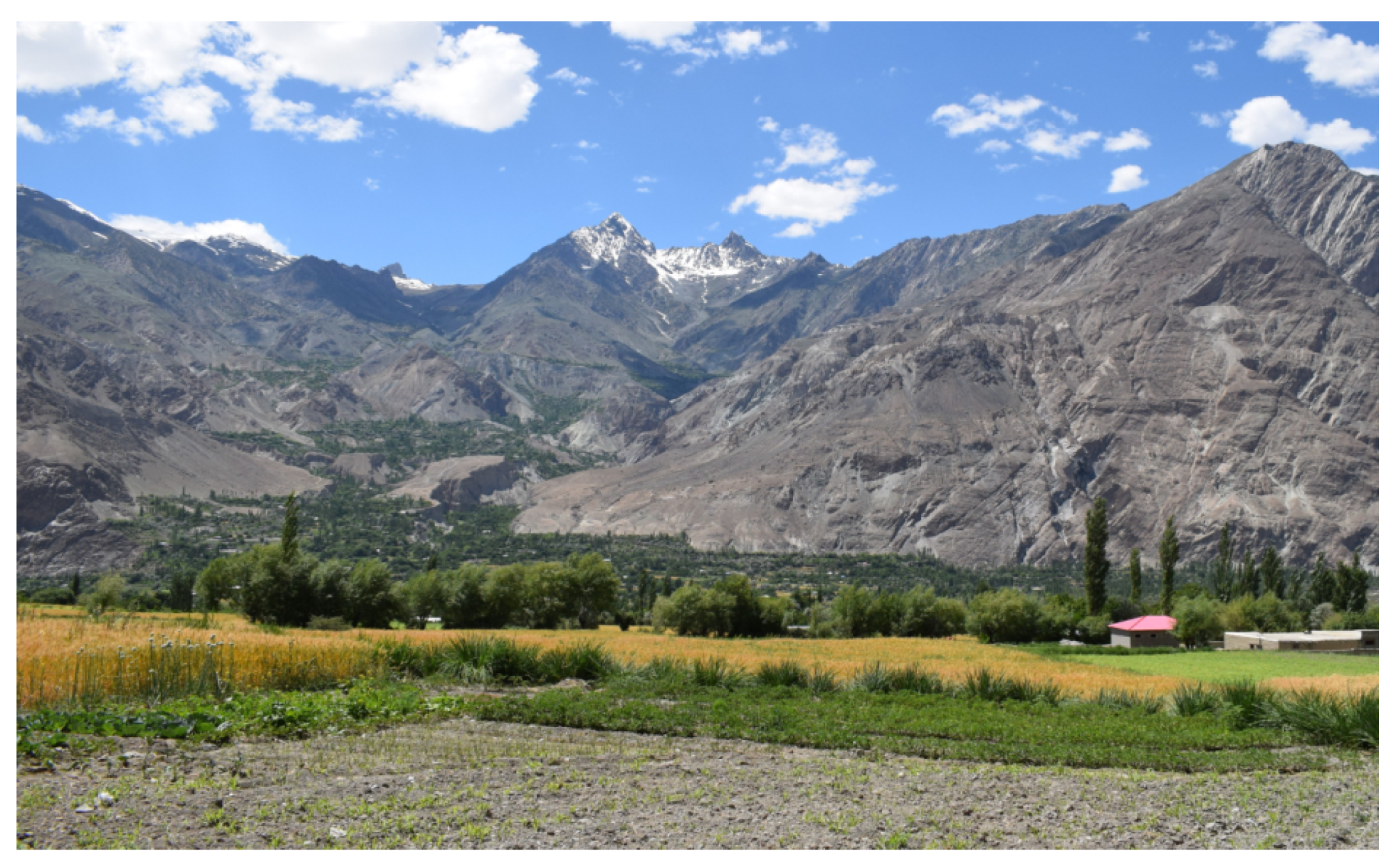
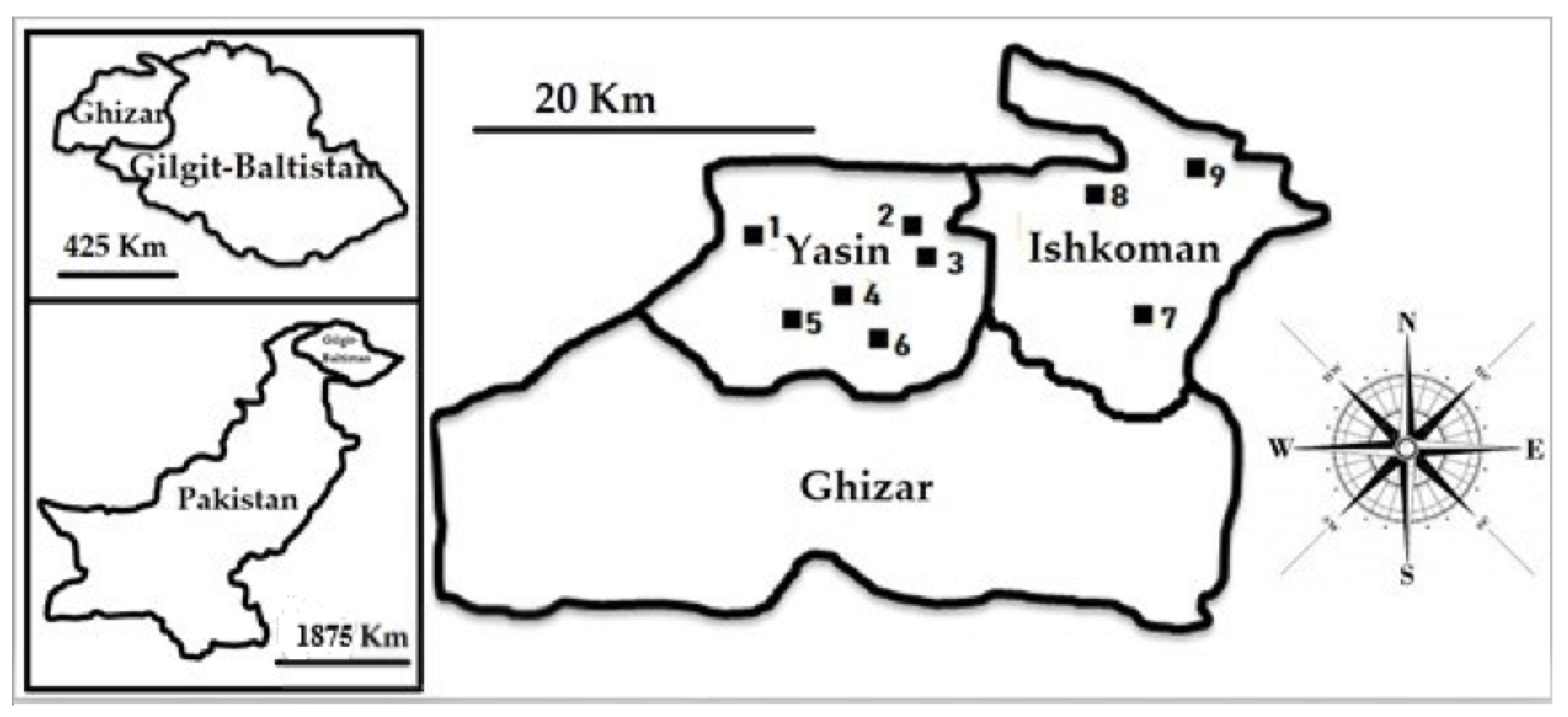
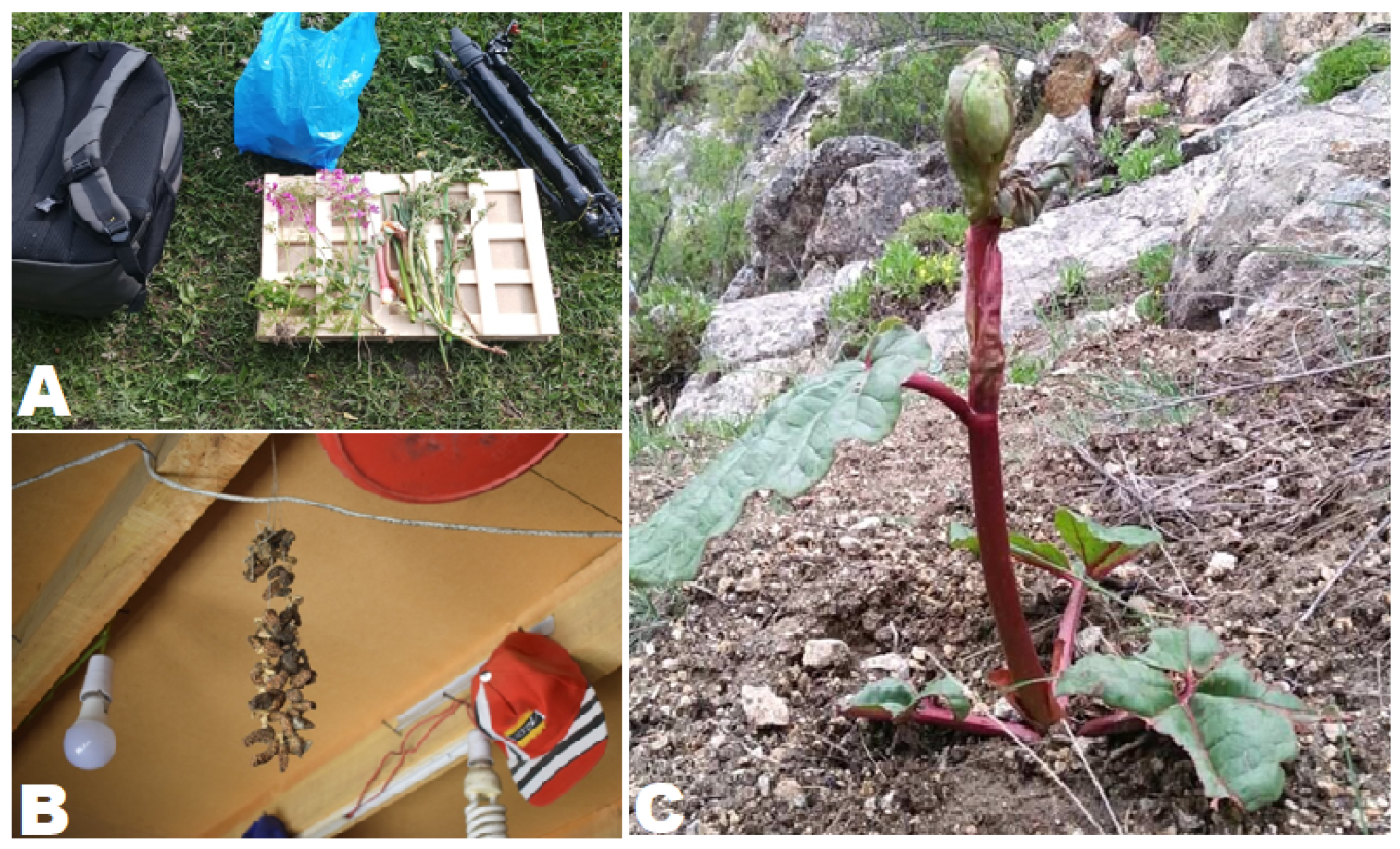
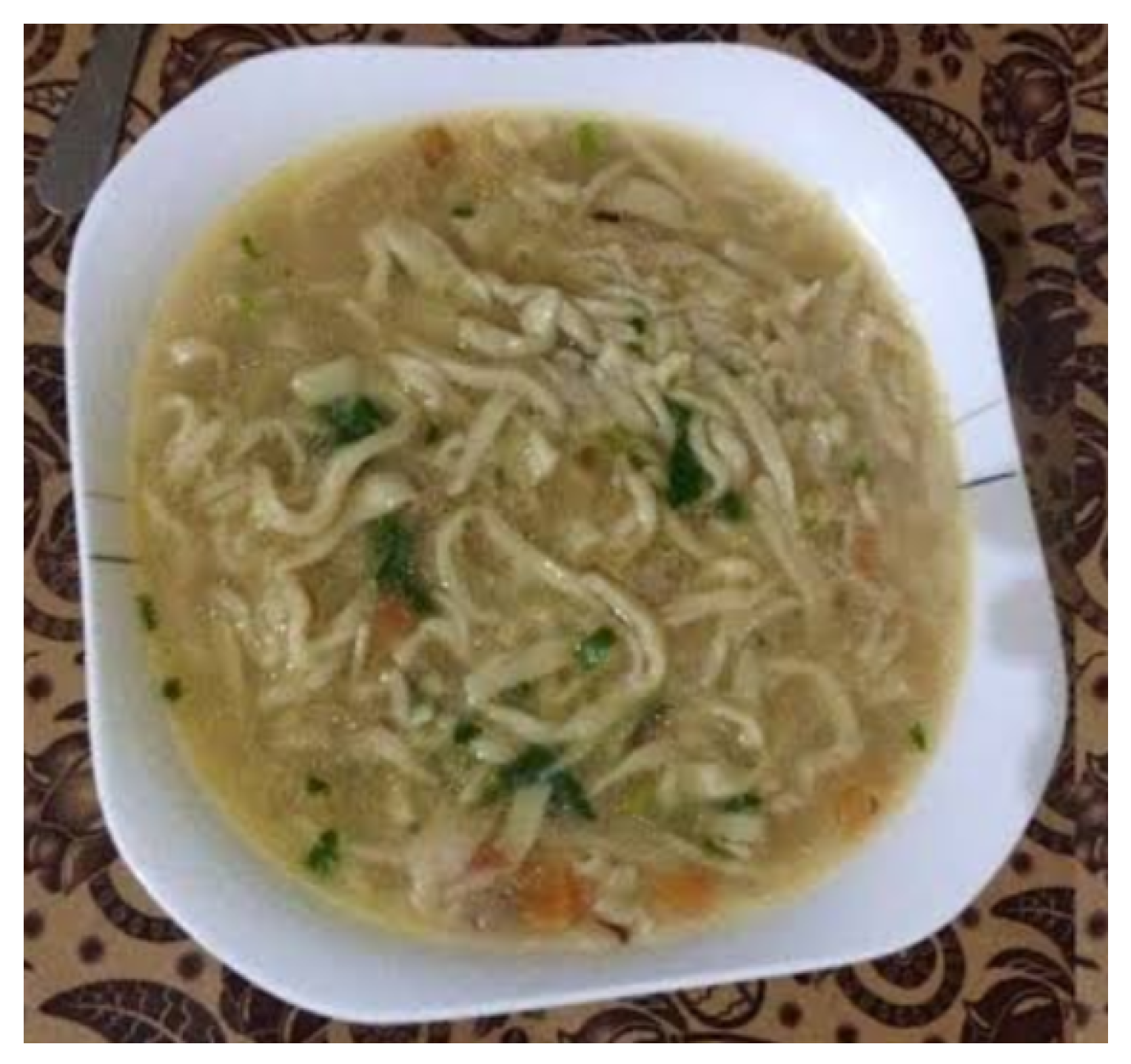
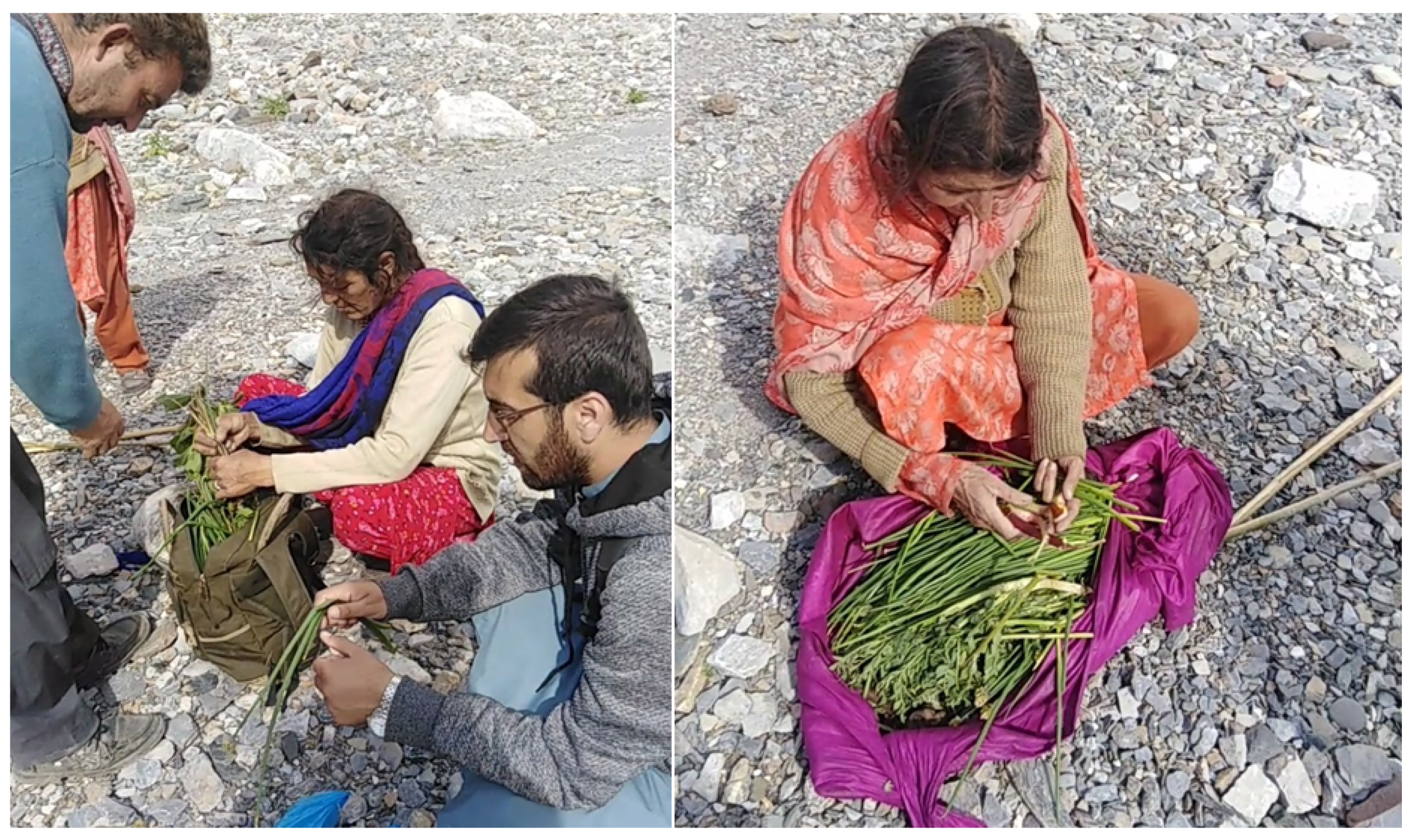
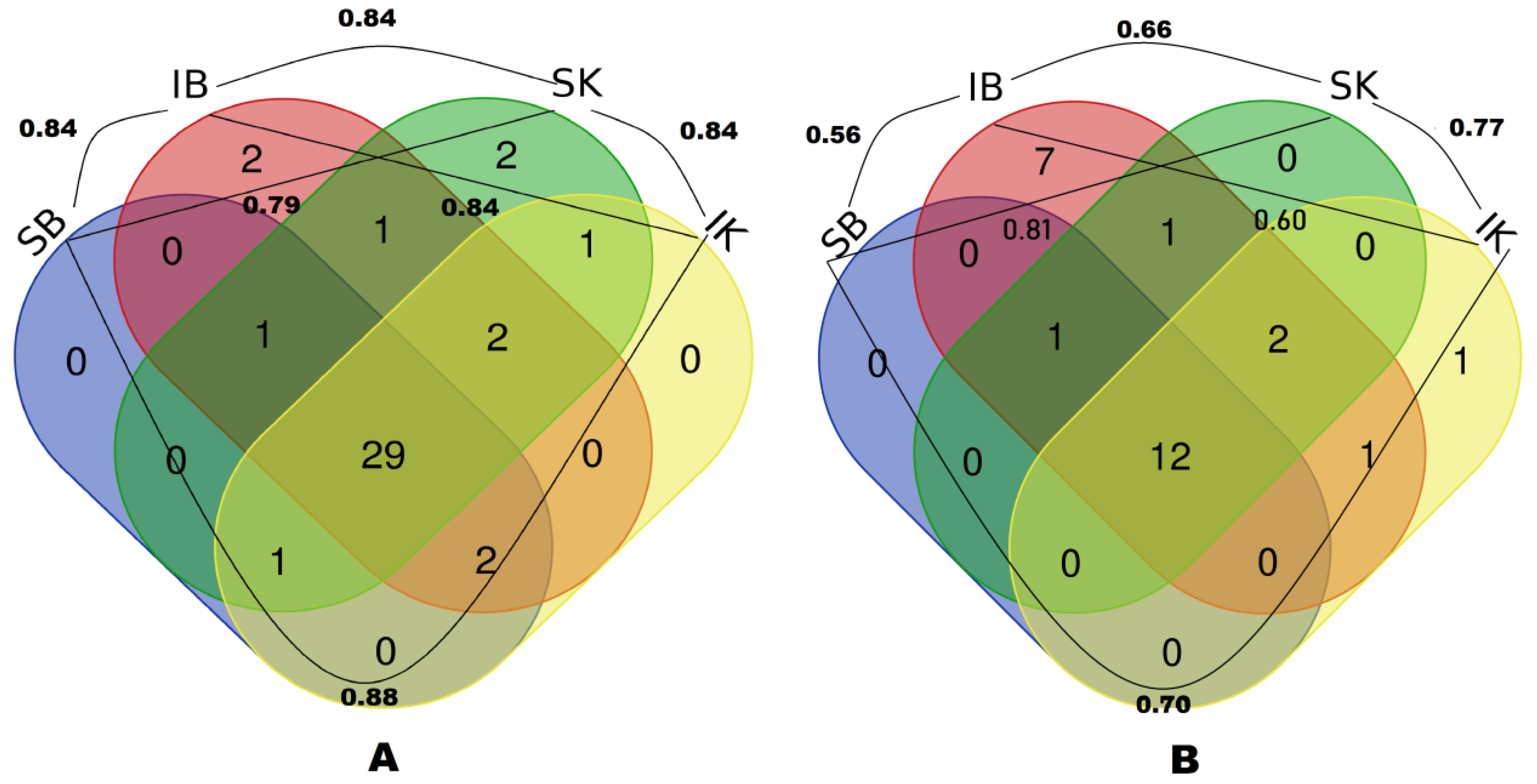
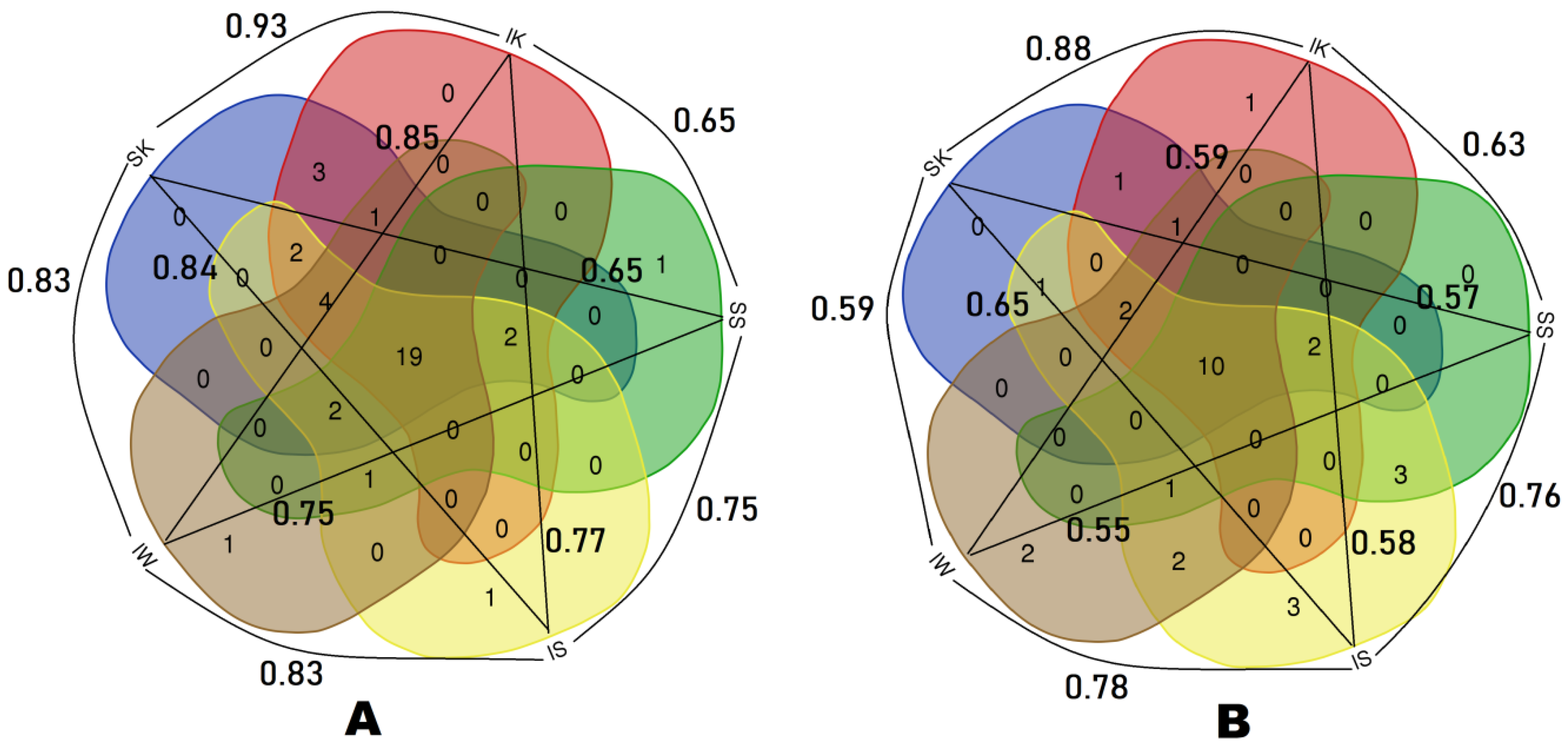
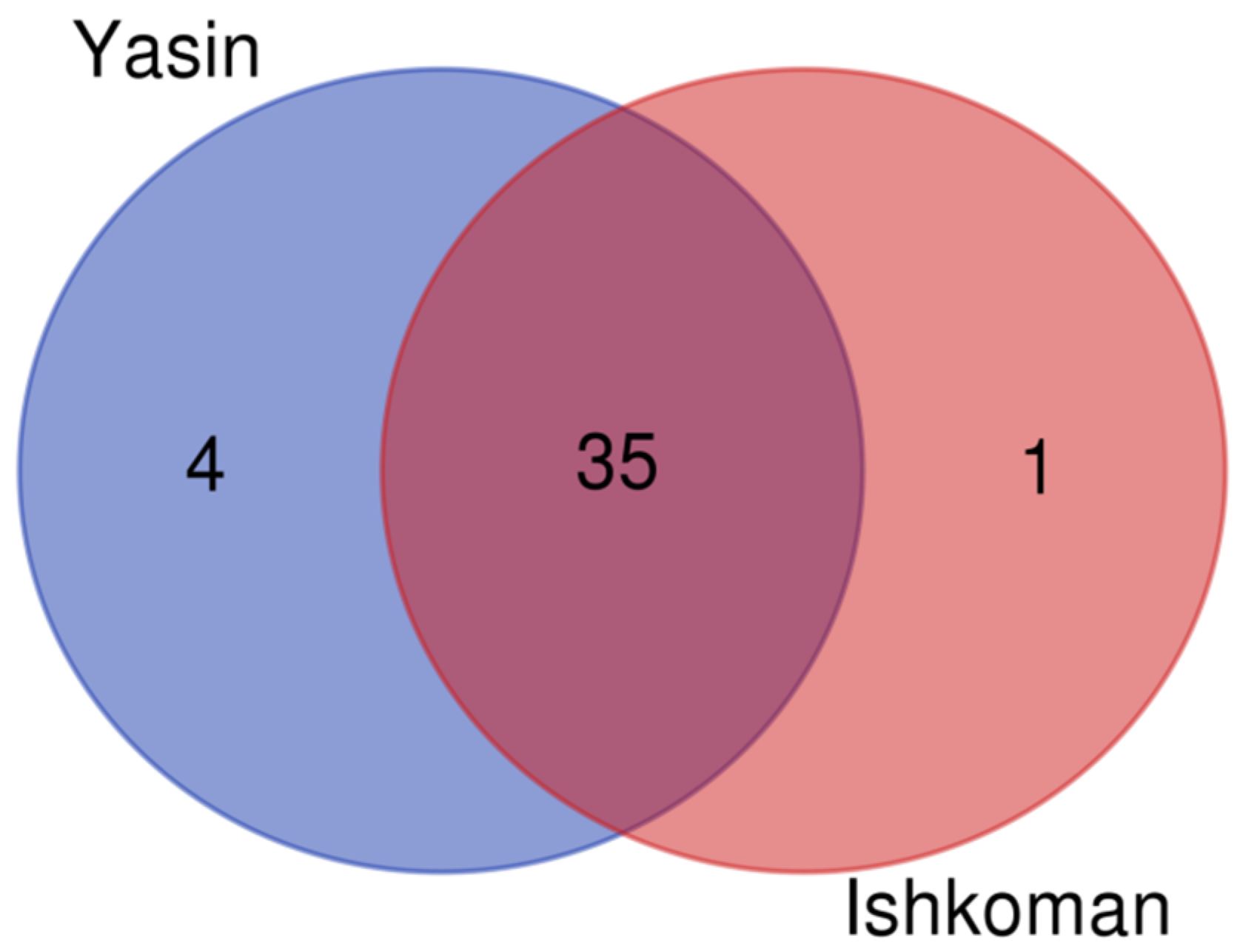
| Language | Village | Elevation (Metres Above Sea Level) | Approx. Number of Inhabitants | Number of Interviewees (Male/Female) | Islamic Faith | Arrival in the Area | Subsistence Activities |
|---|---|---|---|---|---|---|---|
| Yasin Valley | |||||||
| Burushaski | Barkolti | 2462 | 12,000 | 5/5 | Sunni | Autochthonous | Horticulturalism and pastoralism |
| - | Ismaili | ||||||
| Ghojalti | 2415 | 9000 | - | Sunni | |||
| 5 | Ismaili | ||||||
| Sandi | 2395 | 7000 | - | Sunni | |||
| 3/2 | Ismaili | ||||||
| Sultan Abad | 2405 | 3000 | - | Sunni | |||
| 3/6 | Ismaili | ||||||
| Thawoos | 2397 | 4000 | 3/2 | Sunni | |||
| 1/1 | Ismaili | ||||||
| Yasin Khaas | 2371 | 7000 | 3/2 | Sunni | |||
| - | Ismaili | ||||||
| Khowar | Barkolti | 2462 | 12,000 | - | Sunni | Arrived in the 17th century from Chitral, North-West Pakistan | Horticulturalism and pastoralism |
| - | Ismaili | ||||||
| Ghojalti | 2415 | 9000 | - | Sunni | |||
| - | Ismaili | ||||||
| Sandi | 2395 | 7000 | 2/1 | Sunni | |||
| 2/2 | Ismaili | ||||||
| Sultan Abad | 2405 | 3000 | 1/2 | Sunni | |||
| 5/3 | Ismaili | ||||||
| Thawoos | 2397 | 4000 | 2/2 | Sunni | |||
| 4/4 | Ismaili | ||||||
| Yasin Khaas | 2371 | 7000 | 7/3 | Sunni | |||
| - | Ismaili | ||||||
| Ishkoman Valley | |||||||
| Khowar | Chatorkhand | 2092 | 6000 | 13/7 | Sunni | Arrived in the 17th century from Chitral, North-West Pakistan | Horticulturalism and pastoralism |
| 10/10 | Ismaili | ||||||
| Shina | Ishkoman Khaas | 2092 | 3000 | 15/5 | Sunni | Arrived from other areas of Gilgit-Baltistan (North Pakistan) in the late 18th century | Mainly horticulturalism |
| 12/8 | Ismaili | ||||||
| Wakhi | Imit | 2391 | 3500 | - | Sunni | Migrated into the area from Wakhan Corridor (North-East Afghanistan) during the 19th century | Pastoralism and horticulturalism |
| 12/8 | Ismaili | ||||||
| Botanical Taxon; Family; Botanical Voucher Specimen Code | Recorded Local Names | Parts Used | Recorded Local Food Uses | Religious and Linguistic Communities in Which the Food Use Was Recorded | Previously Reported in Pakistan | ||||||||
|---|---|---|---|---|---|---|---|---|---|---|---|---|---|
| IBY | IKI | IKY | ISI | IWI | SBY | SKI | SKY | SSI | |||||
| Allium fedtschenkoanum Regel; Amaryllidaceae; SWAT005487 | Gasho B Kasch K Karghapyaz W Khasho S Teshto K | Aerial parts | Cooked | + | + | + | + | + | + | + | + | + | Yes |
| Allium carolinianum DC.; Amaryllidaceae | Latruk K Lanturk W Khasch B,S | Aerial parts | Cooked | + | + | + | + | + | + | + | + | + | Yes |
| Amaranthus cruentus L.; Amaranthaceae; SWAT005512 | Bardoomhoi B Kruishakh K, S Lolosha S Sakarghaz W | Leaves | Cooked | + | + | + | + | + | + | + | + | + | Yes |
| Artemisia annua L.; Asteraceae; SWAT005779 | Kakasho B, S Khalkhalich K Khulkhulo K Stwirg W | Aerial parts | Cooked in Dawdoo | + | + | + | + | + | + | + | No | ||
| Berberis parkeriana C.K. Schneid.; Berberidaceae; SWAT005491 | Chong K Chikoring S Ishkor W Ishkoring B Ishkorash B Ishkoring K Karaqoot W ZolagW | Fruits | Raw snack | + | + | + | + | + | + | + | + | No | |
| Bergenia stracheyi (Hook. F. and Thomson) Engl.; Saxifragaceae | Beesapur K Bushk W Geesapur K Geesapur B Geesapur S Sapur W | Roots | Tea | + | + | + | + | + | + | + | + | + | Yes |
| Brassica rapa L.; Brassicaceae; SWAT005807, SWAT005520 | Charrsham S Chiroogh W Malharo B Malharo K | Leaves | Cooked | + | + | + | + | + | + | + | + | Yes | |
| Capparis spinosa L.; Capparaceae; SWAT005794 | Chopur B Kapur W Kaveer K Kaveer S | Flowers | Cooked | + | + | + | + | + | + | + | + | + | Yes |
| Carum carvi L.; Apiaceae; SWAT005486 | Hojooj B Hojooj K Hojooj S Zeera W | Seeds | Seasoning | + | + | + | + | + | + | + | + | + | Yes |
| Tea | + | + | + | + | + | + | + | + | + | ||||
| Chenopodium album L.; Amaranthaceae; SWAT005509, SWAT005499 | Konah S Konakh K Konakh B Shileet W | Aerial parts | Cooked | + | + | + | + | + | + | + | + | + | Yes |
| Cotoneaster nummularius Fish. and Mey.; Rosaceae; SWAT005485 | Dodool S Dundal B Mikeen K | Fruits | Snack | + | + | + | + | + | + | + | + | + | Yes |
| Echinops echinatus Roxb.; Asteraceae; SWAT005490 | Chacheer S Chancheer B Chancheerak K Kankeer W Kareer W | Roots | Snack | + | + | + | + | + | + | + | + | + | No |
| Elaeagnus angustifolia L.; Elaeagnaceae; SWAT005806, SWAT005808 | Ginahoor B Gunair S Sisk W Sonjoor K | Bark | Tea | + | + | + | + | + | + | + | + | + | Yes |
| Flowers | Seasoning | + | + | + | + | + | + | ||||||
| Fruits | Snack | + | + | + | + | + | + | + | + | + | |||
| Eremurus himalaicus Baker; Xanthorrhoeaceae | Laqa K, S Laqa B Laqanz K Laqo S | Aerial parts | Cooked | + | + | + | + | + | + | + | + | + | Yes |
| Hedysarum falconeri Baker; Leguminosae | Shavoo K Shingalo B | Bark | Tea | + | + | + | + | Yes | |||||
| Shoots | Snack | + | + | + | + | ||||||||
| Helianthus tuberosus L.; Asteraceae; SWAT005476 | Jangli Kachalo K, S Jangli Kachalo B | Tubers | Snack | + | + | + | + | + | + | + | + | No | |
| Iris hookeriana Foster; Iridaceae; SWAT005478 | Shato K Sosan B, K Sosan W, S | Aerial parts | Cooked | + | + | + | + | + | + | + | + | No | |
| Lepidium didymium L.; Brassicaceae | Holominazk iB Khodong K Shadoi W Shadong K Shadong K Shadoging S | Aerial parts | Cooked | + | + | + | + | + | + | + | + | No | |
| Lepyrodiclis holosteoides (C.A. Mey.) Fenzl ex Fisch. and C.A. Mey.; Caryophyllaceae | Balghar B Birghal K, S Yarkwoosh W | Aerial parts | Cooked | + | + | + | + | + | + | + | + | + | Yes |
| Medicago sativa L.; Fabaceae; SWAT005797, SWAT005795 | Ishpit B | Aerial parts | Cooked | + | Yes | ||||||||
| Mentha longifolia (L.) L.; Lamiaceae; SWAT005792, SWAT005790 | Ben K Phalaling B Phaleel S Wadan W | Aerial parts | Salad | + | + | + | + | + | + | + | + | + | Yes |
| Morchella esculenta (L.) Pers.; Morchellaceae | Shalkhot W Shoto B, K Shoot S | Aerial parts | Cooked | + | + | + | + | + | + | + | + | + | Yes |
| Portulaca quadrifida L.; Portulacaceae | Pichili W, S Pichiling K, B | Aerial parts | Cooked | + | + | + | + | + | + | + | + | + | Yes |
| Rheum maximowiczii Royle; Polygonaceae | Chotal S Naik W Shpaar K Zeekap B, K Zeekap K, S Zeepak S | Stalks | Snack | + | + | + | + | + | + | + | + | + | Yes |
| Rheum sp.; Polygonaceae | Chotool S Kakool K, B Naik W, | Young shoots | Snack | + | + | + | + | + | + | + | + | + | Yes |
| Ribes alpestre Wall.ex. Decne.; Grossulariaceae; SWAT005775 | Chilazum W Ishkorash B Shatoo K Shatoo B Shatoo K, S | Fruits | Snack | + | + | + | + | + | + | Yes | |||
| Ribes sp.; Grossulariaceae; SWAT005774 | Ginat W Inaat W | Fruits | Snack | + | Yes | ||||||||
| Rosa webbiana Wall. ex Royle; Rosaceae; SWAT005502 | Chareer W Goshalgoo S Shawo B Shinai S, Shingai S Throni K | Bark | Tea | + | + | + | + | + | + | + | + | + | Yes |
| Flowers | Tea | + | + | + | + | + | + | + | + | + | |||
| Seasoning | + | + | + | + | + | + | + | + | + | ||||
| Rubus fruticosus G.N. Jones; Rosaceae | Tikbaranj B Chootimirach K Marach K Marooch K | Fruits | Snack | + | + | + | + | Yes | |||||
| Rumex dentatus L.; Polygonaceae; SWAT005468 | Sirkonzoor K | Leaves | Cooked | + | + | + | + | Yes | |||||
| Saussurea lappa (Decne.) C.B. Clarke; Asteraceae | Minal B, K, S | Aerial parts | Additive in the home-made processes of yogurt and butter production | + | + | + | + | + | + | No | |||
| Salvia nubicola Wall. ex Sweet; Lamiaceae; SWAT005761 | Paltasho B | Shoots | Snack | + | Yes | ||||||||
| Silene conoidea L.; Caryophyllaceae; SWAT005481, SWAT005514 | Hapupar B, K, S | Aerial parts | Cooked | + | + | + | + | + | + | + | Yes | ||
| Silene vulgaris (Moench) Garcke; Caryophyllaceae; SWAT005475 | Tumtak K, S | Aerial parts | Cooked | + | + | + | + | + | Yes | ||||
| Sorbus sp.; Rosaceae | Tar bhalt B Lalmi Palough K | Fruits | Snack | + | + | Yes | |||||||
| Taraxacum campylodes G.E. Haglund; Asteraceae | Ishkanacho B, K, S Papas W | Leaves | Cooked and salad | + | + | + | + | + | + | + | + | + | Yes |
| Thymus linearis Benth.; Lamiaceae | Jambilak W Krotum S Sew K Tumoor B, K Tumooru S | Aerial parts | Tea and seasoning | + | + | + | + | + | + | + | + | + | Yes |
| Tulipa sp.; Liliaceae | Cheeram K Chirongo B | Bulbs | Snack | + | + | + | + | Yes | |||||
| Urtica dioica L.; Urticaceae; SWAT005479, SWAT005501 | Drozono K Ghashoshing B, K Joomi S Zoomi S | Leaves | Cooked | + | + | + | + | + | + | + | + | Yes | |
| Vicia sativa L.; Fabaceae; SWAT005798, SWAT005799 | Barawo B, K, S | Aerial parts | Cooked | + | + | + | + | + | + | Yes | |||
| Unidentified taxon | Navoohar B, K, S | Aerial parts | Cooked | + | + | + | + | + | |||||
© 2020 by the authors. Licensee MDPI, Basel, Switzerland. This article is an open access article distributed under the terms and conditions of the Creative Commons Attribution (CC BY) license (http://creativecommons.org/licenses/by/4.0/).
Share and Cite
Abdul Aziz, M.; Abbasi, A.M.; Ullah, Z.; Pieroni, A. Shared but Threatened: The Heritage of Wild Food Plant Gathering among Different Linguistic and Religious Groups in the Ishkoman and Yasin Valleys, North Pakistan. Foods 2020, 9, 601. https://doi.org/10.3390/foods9050601
Abdul Aziz M, Abbasi AM, Ullah Z, Pieroni A. Shared but Threatened: The Heritage of Wild Food Plant Gathering among Different Linguistic and Religious Groups in the Ishkoman and Yasin Valleys, North Pakistan. Foods. 2020; 9(5):601. https://doi.org/10.3390/foods9050601
Chicago/Turabian StyleAbdul Aziz, Muhammad, Arshad Mehmood Abbasi, Zahid Ullah, and Andrea Pieroni. 2020. "Shared but Threatened: The Heritage of Wild Food Plant Gathering among Different Linguistic and Religious Groups in the Ishkoman and Yasin Valleys, North Pakistan" Foods 9, no. 5: 601. https://doi.org/10.3390/foods9050601
APA StyleAbdul Aziz, M., Abbasi, A. M., Ullah, Z., & Pieroni, A. (2020). Shared but Threatened: The Heritage of Wild Food Plant Gathering among Different Linguistic and Religious Groups in the Ishkoman and Yasin Valleys, North Pakistan. Foods, 9(5), 601. https://doi.org/10.3390/foods9050601







